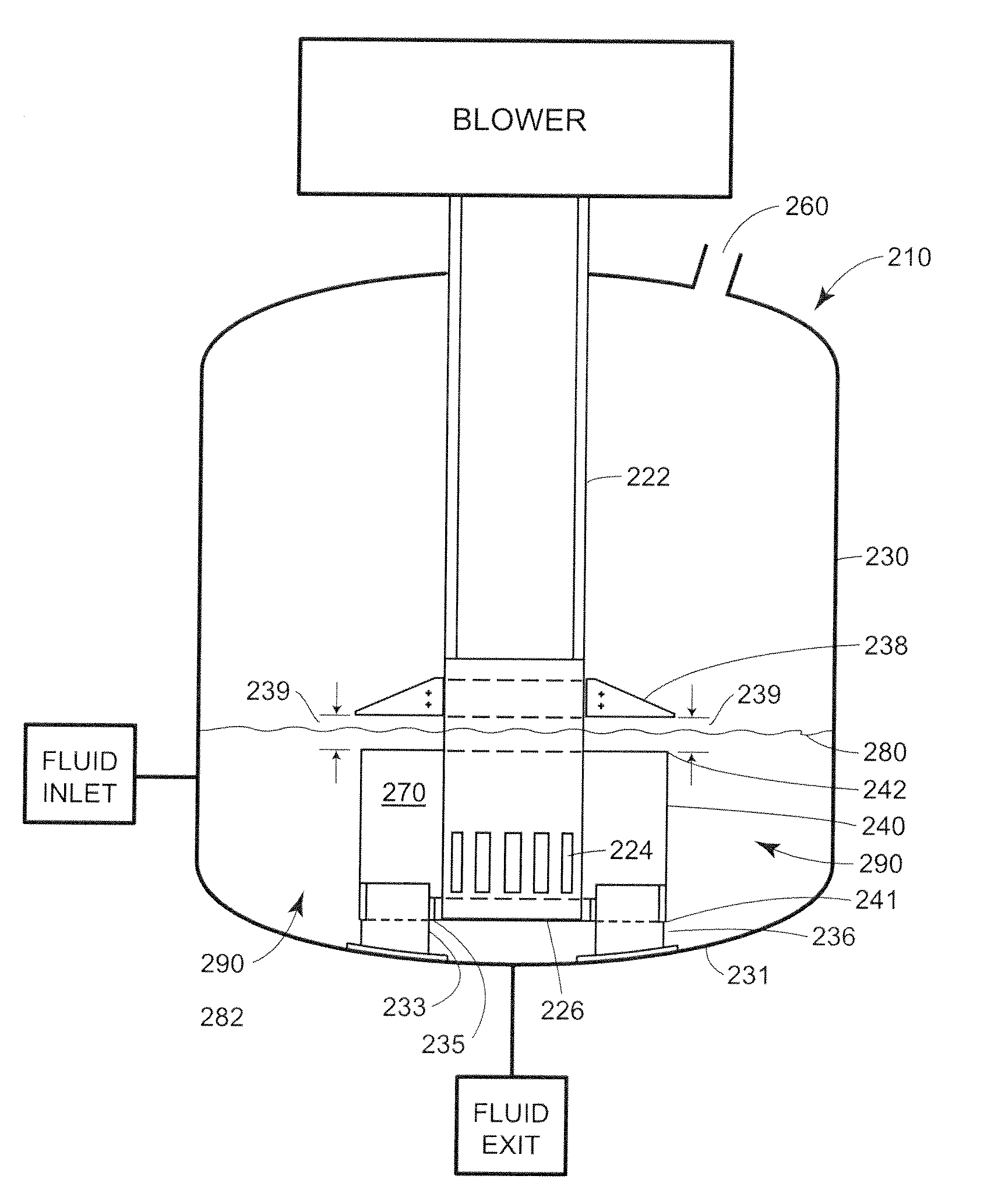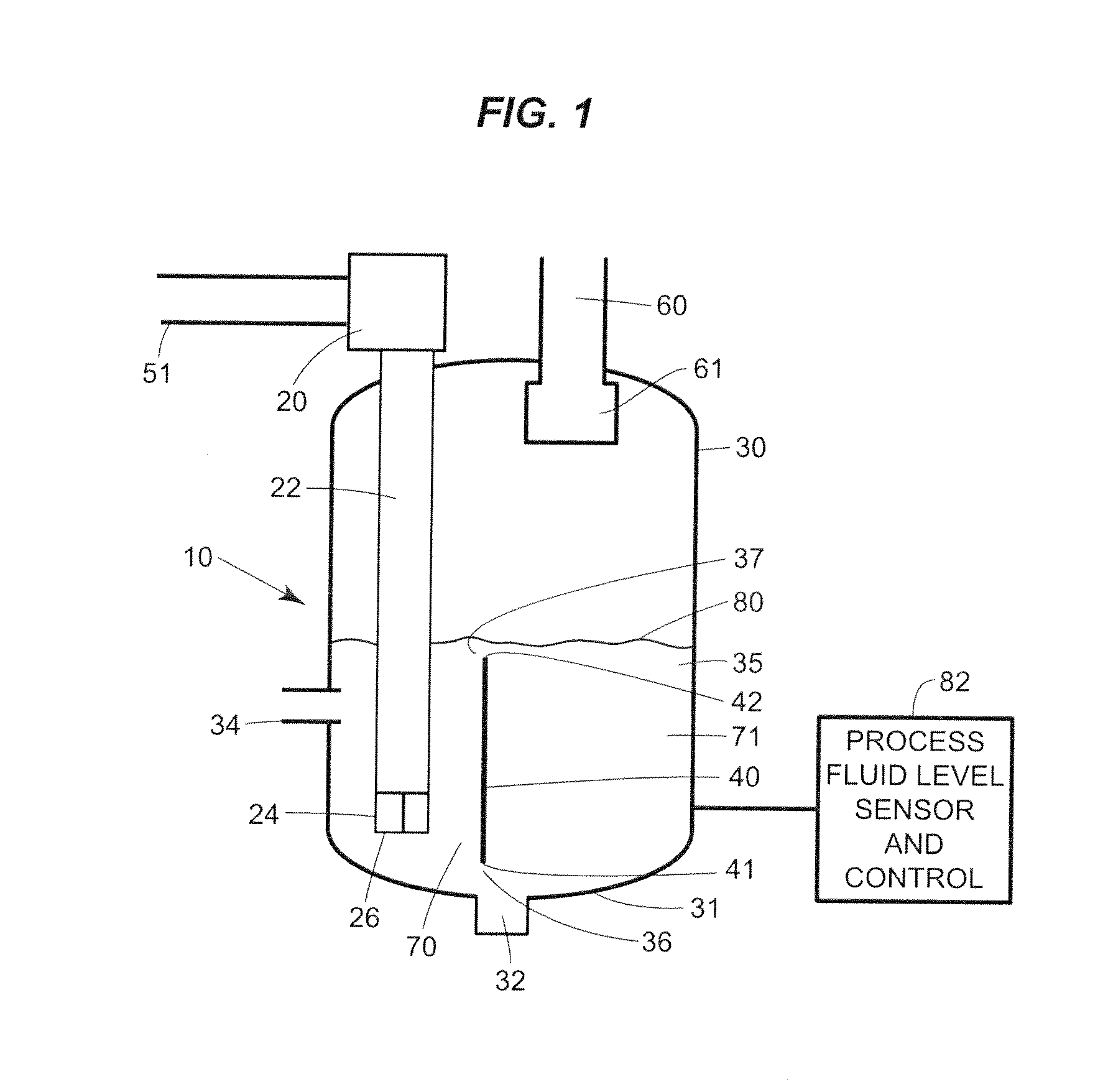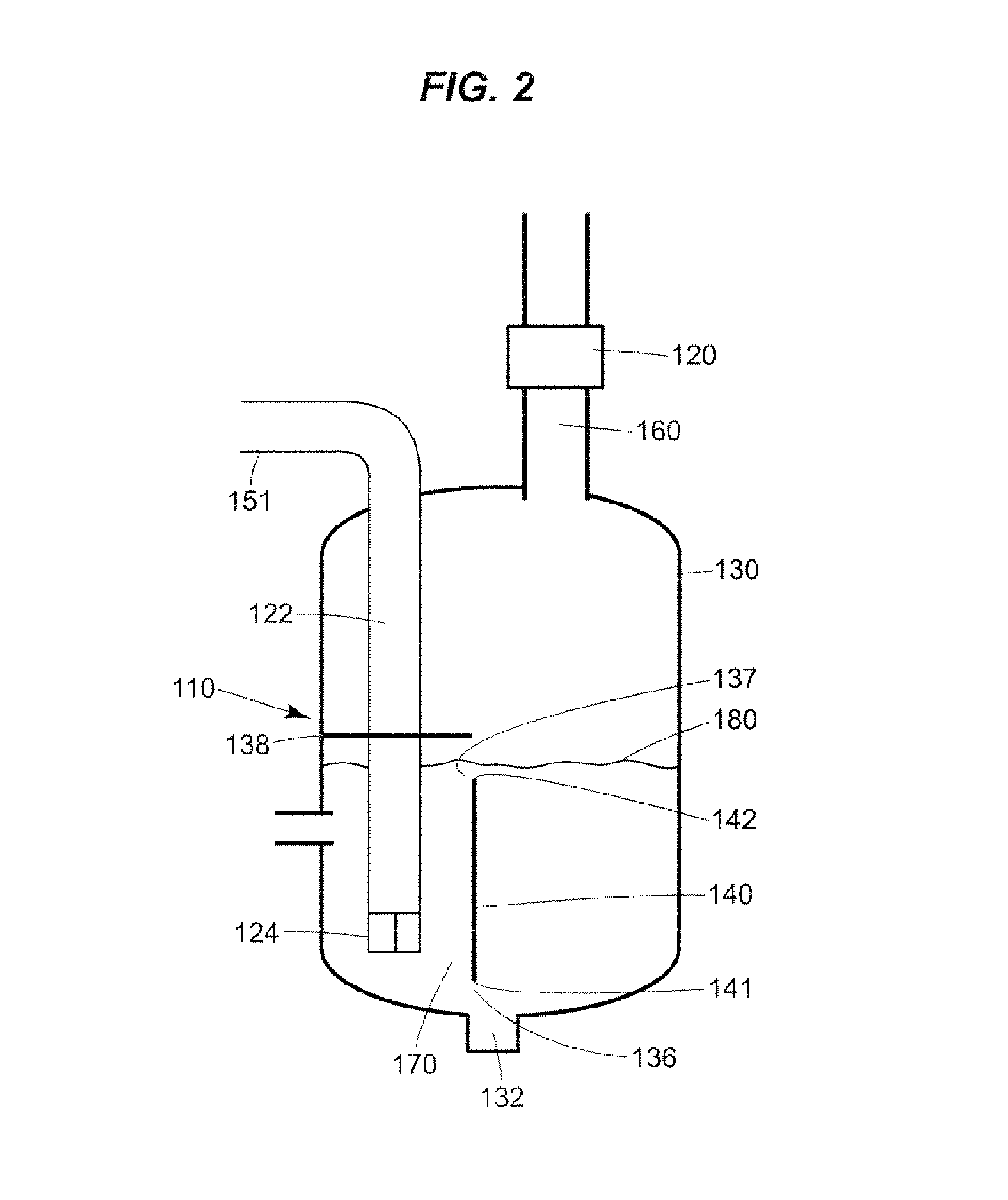Cooling tower
a cooling tower and tower technology, applied in the field of cooling towers, can solve the problems of limited theoretical temperature that the water can be cooled to, more expensive to purchase, operate and maintain per unit of cooling so as to achieve significant reduction or complete elimination of clogging and fouling, high degree of turbulence, and high degree of mixing action
- Summary
- Abstract
- Description
- Claims
- Application Information
AI Technical Summary
Benefits of technology
Problems solved by technology
Method used
Image
Examples
Embodiment Construction
[0026]Advantages of cooling towers according to the disclosure may be realized by substituting such cooling towers for conventional cooling towers in most cooling applications. Wherever cooling towers according to the disclosure are employed, conventional means may be employed to control the flow of the gas and the flow of cooling fluid through the cooling tower and, if required, to post-treat the cooling liquid and / or gas. Likewise, most other conventional means of controlling cooling tower systems to meet the requirements of a particular application may be employed. Also, multiple cooling towers according to the disclosure may be connected in series or parallel configurations to meet the cooling demand of a particular application.
[0027]Referring to FIG. 1, a cooling tower 10, in the form of a submerged combustion gas evaporator, includes a blower 20 that provides gas under positive pressure to an evaporator vessel 30 through a gas supply Lube or gas inlet tube 22 having sparge or ...
PUM
| Property | Measurement | Unit |
|---|---|---|
| distance | aaaaa | aaaaa |
| temperature | aaaaa | aaaaa |
| height | aaaaa | aaaaa |
Abstract
Description
Claims
Application Information
 Login to View More
Login to View More - R&D
- Intellectual Property
- Life Sciences
- Materials
- Tech Scout
- Unparalleled Data Quality
- Higher Quality Content
- 60% Fewer Hallucinations
Browse by: Latest US Patents, China's latest patents, Technical Efficacy Thesaurus, Application Domain, Technology Topic, Popular Technical Reports.
© 2025 PatSnap. All rights reserved.Legal|Privacy policy|Modern Slavery Act Transparency Statement|Sitemap|About US| Contact US: help@patsnap.com



